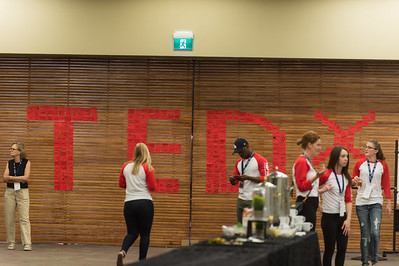It’s no surprise people want to speak on the TEDx stage – doing so automatically establishes you as a thought leader in your industry. Whether you’re an artist, CEO, entrepreneur or author (or none of the above), if you want to be a TEDx speaker, you need to show organizers that you can talk like TED.
TEDx talks are personal. You must feel so passionately about your idea that your sense of purpose creates energy for both you and the audience. Why is this idea important and why do you care? Make sure you can explain that to the audience.
According to the TED website, an idea can be one of two things:
- Something that’s new and surprising; an idea or invention that your audience has never heard about
- A great, basic idea (that your audience has maybe already heard) with a compelling new argument behind it that challenges beliefs and perspectives.
When trying to choose a TEDx topic – think of it in three stages: generate ideas, prioritize them and, finally, refine and evaluate the topic you decide on.
Brainstorm
To start the idea process, start brainstorming some ideas and write them down – what are the most common misconceptions about your field? What makes you angry about your field?
Prioritize
Once you have ideas written down, choose one or more that you’d like to pursue. Some questions: why are you interested in this topic? Will it bring value to your audience? What is your expertise regarding the topic? Your idea should hit all three of those questions.
As long as there’s value for others, you should be excited about your topic. Your audience will get more value out of it and you’re more likely to put the work into developing it.
TEDx audiences want new and interesting ideas – “ideas worth spreading”. The message not only needs to be original and simple, it also has to be relevant to the TEDx audience. Why is now the right time to talk about the idea? Sometimes, any time is a good time – but right now is even better.
Sure, most people think of their own skill and know-how about their idea but forget about the existing expertise of the audience. With this, consider your relative credibility – how much do you know about your topic compared to your audience?
Refine and Evaluate
At this point, you assume your topic will be of value to your audience – but how can you know for sure? Your audience may see your idea differently than you do.
When asking people for their opinion on your idea, rather than asking them flat out (and risk them being biased), see what they do. Use real-life tests and try to get feedback from people that don’t know your message.
Here are some ways to test your topic:
- Summarize it into a Facebook or LinkedIn post (watch for engagement, comments and likes)
- Pitch it as a guest blog post
- Post it as a blog and watch for shares (from people you don’t know)
Use these tests to see if you get a positive response – if not, it might need to make some tweaks and improve it. If you can get a strong response when developing your idea, you have a better chance of your topic doing even better once you put more effort in and give it a larger platform through a TEDx talk.
Try to find a topic that is original in the way you would deliver the message – play with different ways to narrate your journey of discovery. Also, ensure you stay focused on your most important point and understand what makes your idea important to the audience.
Your message needs to be simple. In 18 minutes (or less), there isn’t a lot of time to deliver anything too complex. In order to be simple, your topic should be clear in its objectives and messages. Ask yourself: is this idea new, different, inspiring, original and what impact might it have on the audience?
But having a simple message isn’t necessarily enough – it also has to have clarity. Make sure your talk has a clear structure so it’s easy for the audience to remember what you said, realize where you are and have an idea where you’re going.
Make sure to subscribe to our newsletter to get all the latest TEDxWinnipeg updates delivered right to your inbox, and follow us on Facebook, Twitter, and Instagram.









